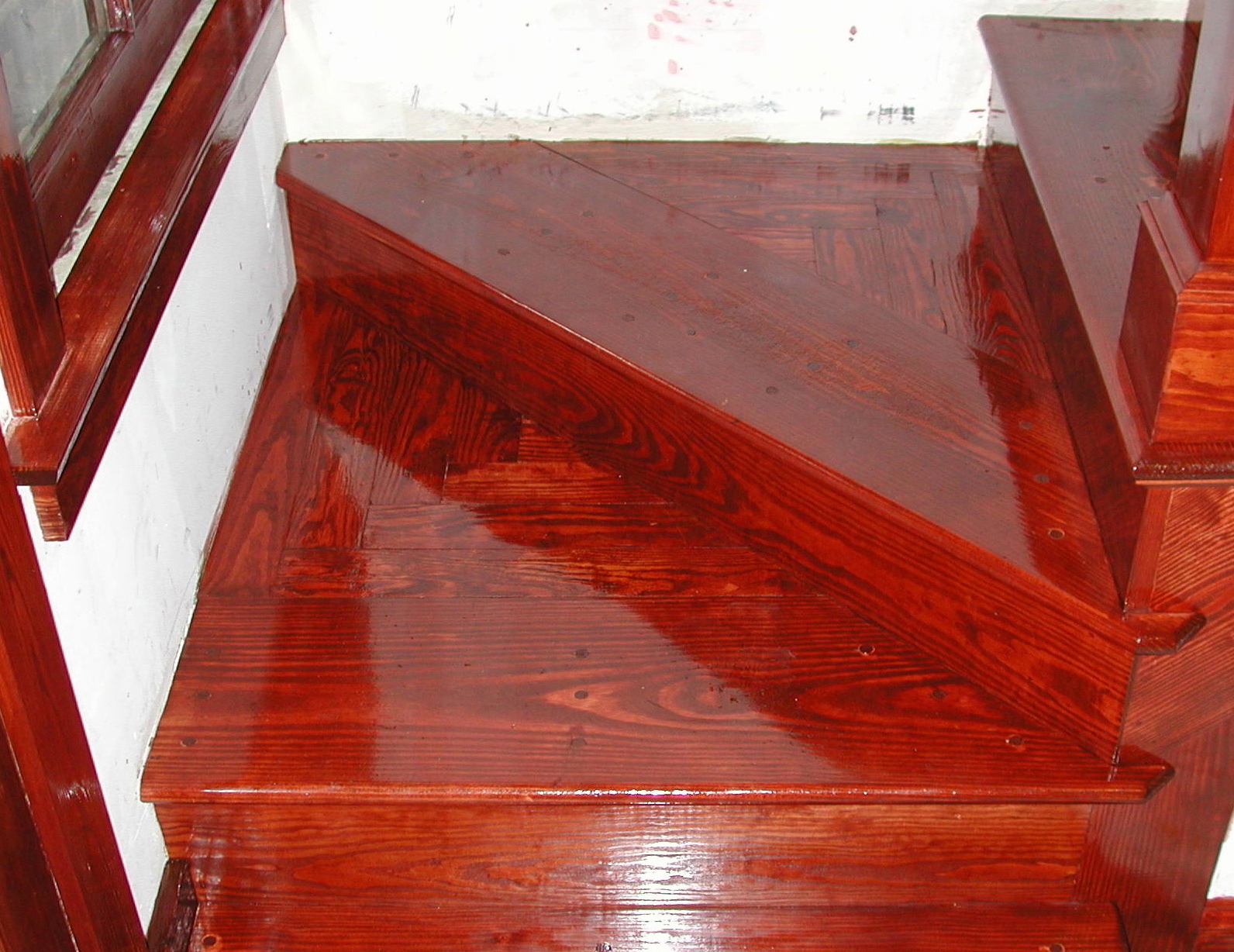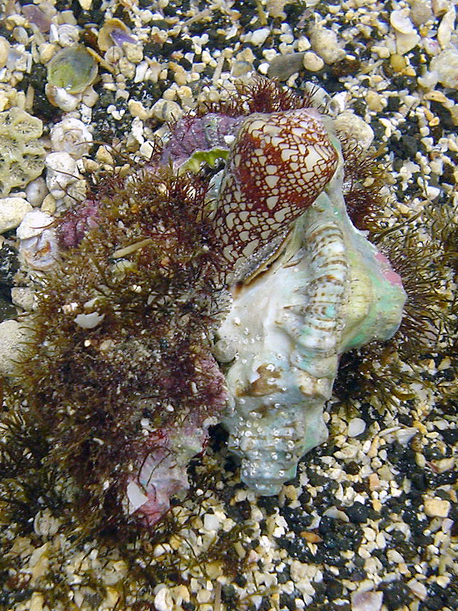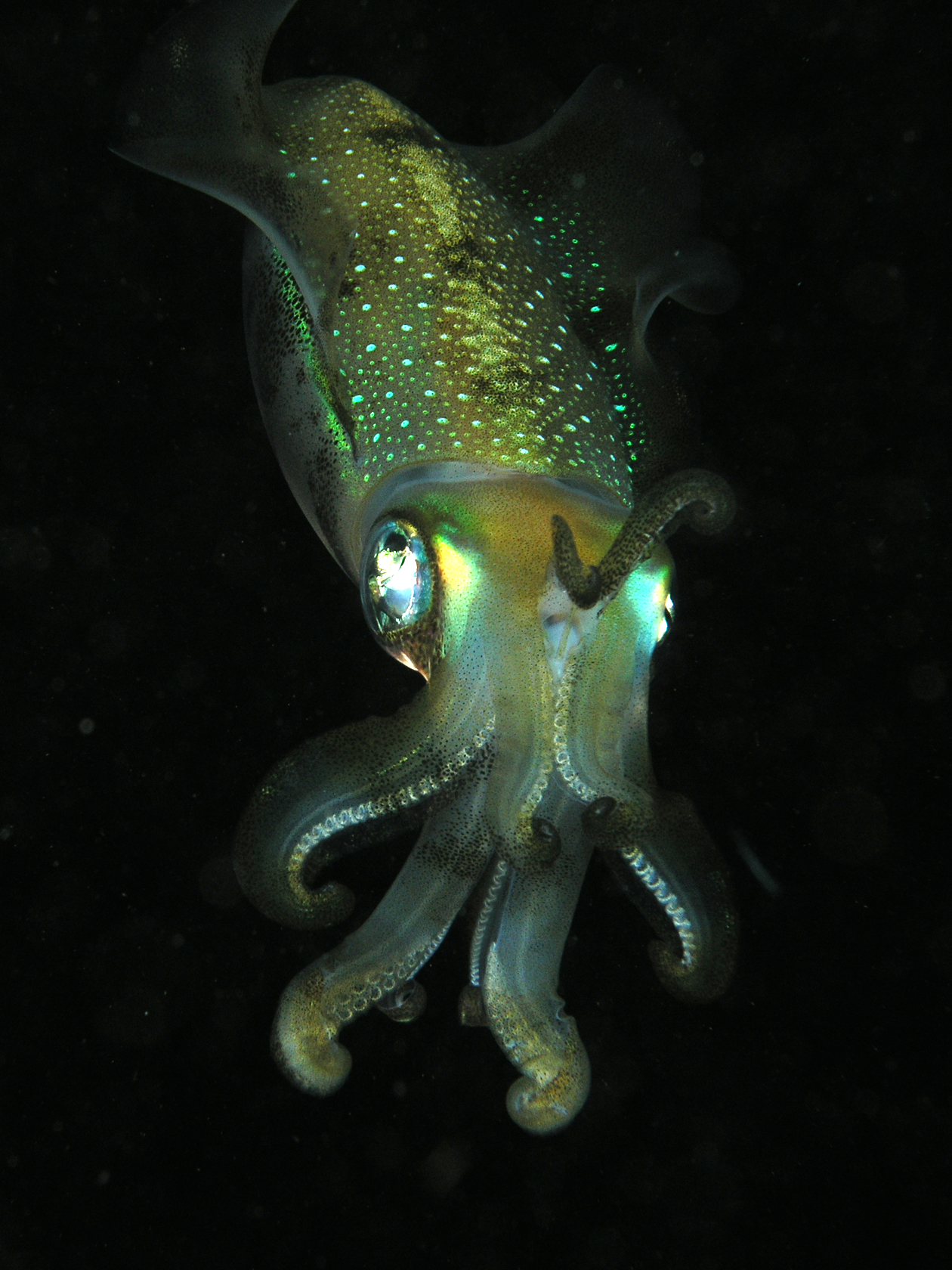|
Periostracum
The periostracum ( ) is a thin, organic coating (or "skin") that is the outermost layer of the shell of many shelled animals, including molluscs and brachiopods. Among molluscs, it is primarily seen in snails and clams, i.e. in gastropods and bivalves, but it is also found in cephalopods such as ''Allonautilus scrobiculatus''. The periostracum is an integral part of the shell, and it forms as the shell forms, along with the other shell layers. The periostracum is used to protect the organism from corrosion. The periostracum is visible as the outer layer of the shell of many molluscan species from terrestrial, freshwater, and marine habitats, and may be seen in land snails, river mussels, and other kinds of freshwater bivalves, as well as in many kinds of marine shelled molluscs. The word ''periostracum'' means "around the shell", meaning that the periostracum is wrapped around what is usually the more calcareous part of the shell. Technically, the calcareous part of the sh ... [...More Info...] [...Related Items...] OR: [Wikipedia] [Google] [Baidu] |
Brachiopod
Brachiopods (), phylum (biology), phylum Brachiopoda, are a phylum of animals that have hard "valves" (shells) on the upper and lower surfaces, unlike the left and right arrangement in bivalve molluscs. Brachiopod valves are hinged at the rear end, while the front can be opened for feeding or closed for protection. Two major categories are traditionally recognized, articulate and inarticulate brachiopods. The word "articulate" is used to describe the tooth-and-groove structures of the valve-hinge which is present in the articulate group, and absent from the inarticulate group. This is the leading diagnostic skeletal feature, by which the two main groups can be readily distinguished as fossils. Articulate brachiopods have toothed hinges and simple, vertically oriented opening and closing muscles. Conversely, inarticulate brachiopods have weak, untoothed hinges and a more complex system of vertical and oblique (diagonal) muscles used to keep the two valves aligned. In many brachio ... [...More Info...] [...Related Items...] OR: [Wikipedia] [Google] [Baidu] |
Conchiolin
Conchiolins (sometimes referred to as conchins) are complex proteins which are secreted by a mollusc's outer epithelium (the mantle). These proteins are part of a matrix of organic macromolecules, mainly proteins and polysaccharides, that assembled together form the microenvironment where crystals nucleate and grow. This organic matrix also holds and binds to the crystals of aragonite which give such shells their stiffness. The ions necessary to form calcium carbonate are also secreted by the mantle, but it is the tailored environment created by the organic matrix which causes aragonite (rather than calcite) crystals to nucleate, in much the same way that collagen nucleates hydroxyapatite crystals. Conchiolin serves as a relatively flexible, crack-deflecting matrix for the mineral aggregate particles; its strength and the strong bonding of perlucin can in some cases (such as in the formation of nacre) give the finished material an impressive level of toughness. As well ... [...More Info...] [...Related Items...] OR: [Wikipedia] [Google] [Baidu] |
Allonautilus Scrobiculatus
''Allonautilus scrobiculatus'', also known as the crusty nautilus or fuzzy nautilus, is a species of nautilus native to the waters around New Guinea, specifically New Britain and Milne Bay, and the Solomon Islands. ''A. scrobiculatus'' is recognizable by the large open Umbilicus (mollusc), umbilicus, which is around 20% of the shell diameter at its widest point. This species, along with the closely related ''Allonautilus perforatus, A. perforatus'', were originally placed in the genus ''Nautilus (genus), Nautilus'', but have recently been given their own genus on account of significant morphological differences.Ward, P.D. & W.B. Saunders 1997''Allonautilus'': a new genus of living nautiloid cephalopod and its bearing on phylogeny of the Nautilida ''Journal of Paleontology'' 71(6): 1054–1064. The most obvious are features of the shell, including crease and an encrusting layer (periostracum) that covers most of the shell. Gills and reproductive structures also differ significantly ... [...More Info...] [...Related Items...] OR: [Wikipedia] [Google] [Baidu] |
Gastropod Shell
The gastropod shell is part of the body of many gastropods, including snails, a kind of mollusc. The shell is an exoskeleton, which protects from predators, mechanical damage, and dehydration, but also serves for muscle attachment and calcium storage. Some gastropods appear shell-less (slugs) but may have a remnant within the mantle, or in some cases the shell is reduced such that the body cannot be retracted within it (semi-slug). Some snails also possess an operculum that seals the opening of the shell, known as the Aperture (mollusc), aperture, which provides further protection. The study of mollusc shells is known as conchology. The biological study of gastropods, and other molluscs in general, is malacology. Shell morphology terms vary by species group. Shell layers The gastropod shell has three major layers secreted by the Mantle (mollusc), mantle. The calcareous central layer, ostracum, is typically made of calcium carbonate (CaCO3) precipitated into an organic matrix ... [...More Info...] [...Related Items...] OR: [Wikipedia] [Google] [Baidu] |
Squamous Epithelium
Epithelium or epithelial tissue is a thin, continuous, protective layer of cells with little extracellular matrix. An example is the epidermis, the outermost layer of the skin. Epithelial ( mesothelial) tissues line the outer surfaces of many internal organs, the corresponding inner surfaces of body cavities, and the inner surfaces of blood vessels. Epithelial tissue is one of the four basic types of animal tissue, along with connective tissue, muscle tissue and nervous tissue. These tissues also lack blood or lymph supply. The tissue is supplied by nerves. There are three principal shapes of epithelial cell: squamous (scaly), columnar, and cuboidal. These can be arranged in a singular layer of cells as simple epithelium, either simple squamous, simple columnar, or simple cuboidal, or in layers of two or more cells deep as stratified (layered), or ''compound'', either squamous, columnar or cuboidal. In some tissues, a layer of columnar cells may appear to be stratified due ... [...More Info...] [...Related Items...] OR: [Wikipedia] [Google] [Baidu] |
Cuticle
A cuticle (), or cuticula, is any of a variety of tough but flexible, non-mineral outer coverings of an organism, or parts of an organism, that provide protection. Various types of "cuticle" are non- homologous, differing in their origin, structure, function, and chemical composition. Human anatomy In human anatomy, "cuticle" can refer to several structures, but it is used in general parlance, and even by medical professionals, to refer to the thickened layer of skin surrounding fingernails and toenails (the eponychium), and to refer to the superficial layer of overlapping cells covering the hair shaft ( cuticula pili), consisting of dead cells, that locks the hair into its follicle. It can also be used as a synonym for the epidermis, the outer layer of skin. Cuticle of invertebrates In zoology, the invertebrate cuticle or cuticula is a multi-layered structure outside the epidermis of many invertebrates, notably arthropods and roundworms, in which it forms an exoskeleton ... [...More Info...] [...Related Items...] OR: [Wikipedia] [Google] [Baidu] |
Varnish
Varnish is a clear Transparency (optics), transparent hard protective coating or film. It is not to be confused with wood stain. It usually has a yellowish shade due to the manufacturing process and materials used, but it may also be pigmented as desired. It is sold commercially in various shades. Varnish is primarily used as a wood finishing, wood finish where, stained or not, the distinctive tones and grains in the wood are intended to be visible. Varnish finishes are naturally Gloss (material appearance), glossy, but satin/semi-gloss and flat sheens are available. History The word "varnish" comes from Mediaeval Latin ''vernix'', meaning odorous resin, perhaps derived from Middle Greek ''berōnikón'' or ''beroníkē'', meaning amber or amber-colored glass. A false etymology traces the word to the Greek ''Berenice'', the ancient name of modern Benghazi in Libya, where the first varnishes in the Mediterranean area were supposedly used and where resins from the trees of now-v ... [...More Info...] [...Related Items...] OR: [Wikipedia] [Google] [Baidu] |
Cone Snail
Cone snails, or cones, are highly venomous sea snails that constitute the family Conidae. ''Conidae'' is a taxonomic family (previously subfamily) of predatory marine gastropod molluscs in the superfamily Conoidea. The 2014 classification of the superfamily Conoidea groups only cone snails in the family Conidae. Some previous classifications grouped the cone snails in a subfamily, Coninae. As of March 2015 Conidae contained over 800 recognized species, varying widely in size from lengths of 1.3 cm to 21.6 cm. Working in 18th-century Europe, Carl Linnaeus knew of only 30 species that are still considered valid. Fossils of cone snails have been found from the Eocene to the Holocene epochs. Cone snail species have shells that are roughly conical in shape. Many species have colorful patterning on the shell surface. Cone snails are almost exclusively tropical in distribution. All cone snails are venomous and capable of stinging. Cone snails use a modified radula tooth and a venom ... [...More Info...] [...Related Items...] OR: [Wikipedia] [Google] [Baidu] |
Malacologist
Malacology, from Ancient Greek μαλακός (''malakós''), meaning "soft", and λόγος (''lógos''), meaning "study", is the branch of invertebrate zoology that deals with the study of the Mollusca (molluscs or mollusks), the second-largest phylum of animals in terms of described species after the arthropods. Mollusks include snails and slugs, clams, and cephalopods, along with numerous other kinds, many of which have shells. Fields within malacological research include taxonomy, ecology and evolution. Several subdivisions of malacology exist, including conchology, devoted to the study of mollusk shells, and teuthology, the study of cephalopods such as octopus, squid, and cuttlefish. Applied malacology studies medical, veterinary, and agricultural applications, for example the study of mollusks as vectors of schistosomiasis and other diseases. Archaeology employs malacology to understand the evolution of the climate, the biota of the area, and the usage of the site. Zool ... [...More Info...] [...Related Items...] OR: [Wikipedia] [Google] [Baidu] |
Gastropod
Gastropods (), commonly known as slugs and snails, belong to a large Taxonomy (biology), taxonomic class of invertebrates within the phylum Mollusca called Gastropoda (). This class comprises snails and slugs from saltwater, freshwater, and from the land. There are many thousands of species of sea snails and sea slug, slugs, as well as freshwater snails, freshwater limpets, land snails and slugs. The class Gastropoda is a diverse and highly successful class of mollusks within the phylum Mollusca. It contains a vast total of named species, second only to the insects in overall number. The fossil history of this class goes back to the Furongian, Late Cambrian. , 721 family (taxonomy), families of gastropods are known, of which 245 are extinct and appear only in the fossil record, while 476 are currently neontology, extant living fossil, with or without a fossil record. Gastropoda (previously known as univalves and sometimes spelled "Gasteropoda") are a major part of the phylum Mo ... [...More Info...] [...Related Items...] OR: [Wikipedia] [Google] [Baidu] |
Stylommatophora
Stylommatophora is an orderPhilippe Bouchet, Jean-Pierre Rocroi, Bernhard Hausdorf, Andrzej Kaim, Yasunori Kano, Alexander Nützel, Pavel Parkhaev, Michael Schrödl and Ellen E. Strong. 2017. Revised Classification, Nomenclator and Typification of Gastropod and Monoplacophoran Families'. Malacologia, 61(1-2): 1-526. of air-breathing land snails and slugs, terrestrial pulmonate gastropod molluscs. This taxon includes most land snails and slugs. Stylommatophorans lack an operculum, but some close their shell apertures with temporary "operculum" ( epiphragm) made of calcified mucus. They have two pairs of retractile tentacles, the upper pair of which bears eyes on the tentacle tips. All stylommatophorans are hermaphrodites. The two strong synapomorphies of Stylommatophora are a long pedal gland placed beneath a membrane and two pairs of retractile tentacles. Stylommatophora are known from the Cretaceous period up to the present day. A molecular clock estimate puts the origin of the ... [...More Info...] [...Related Items...] OR: [Wikipedia] [Google] [Baidu] |








